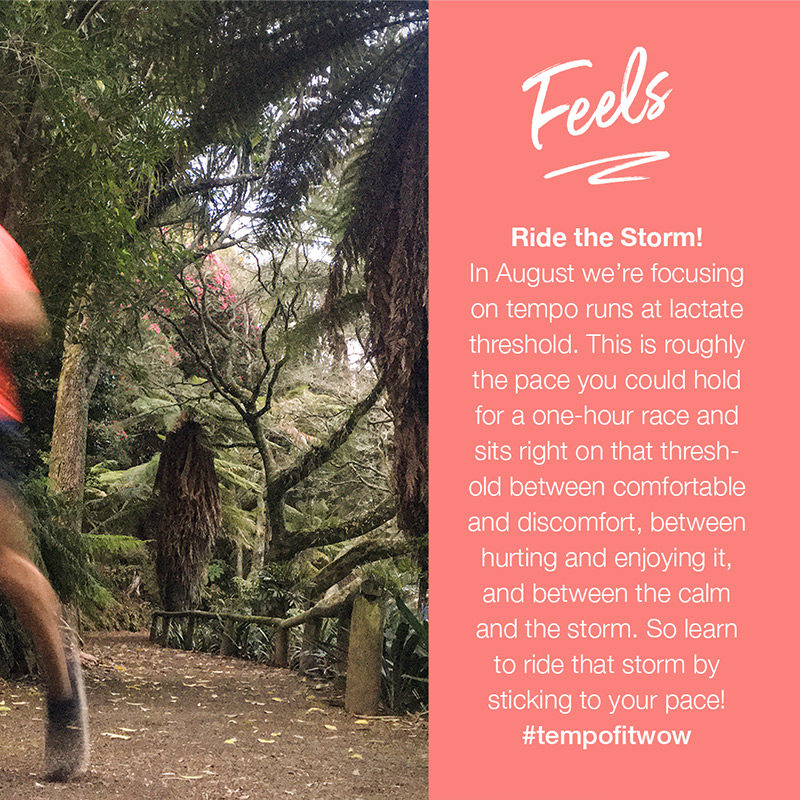
Learning to become comfortable with discomfort is what we’re seeking to do during August as we dive into our first session of tempo runs and riding the storm!
WHAT
2 sets of:
3x20sec strides (100sec recovery jogs)
10mins @ lactate threshold pace
(3mins recovery jogs)
Terrain: Running track or measurable pathway.
Feels: Ride the storm!
Throughout August we are focusing on tempo running at your lactate threshold. This is approximately the pace you could hold for a one-hour race and sits right on that threshold between comfortable and discomfort, between hurting and enjoying it, and between the calm and the storm. So learn to ride that storm by sticking to your pace!
WHY
The strides are in there to set up some good practices of great technique and quick leg turnover before you turn to the grind of the tempo run. As such, I want you to think about standing up tall, elongating the spine and avoiding the hips sitting low. In the podcast I explain this further so have a listen!
HOW
Setting your lactate threshold pace at this stage in the month is important. If you’ve done a recent race you’ll be able to plug that in to our race and pace calculator at tempofit.org. Otherwise estimate it based on pre-lockdown race results coupled with how your workouts and training has been feeling.
And always listen to your body throughout the workout, genuinely asking yourself “can I hold this pace for an hour?”
THOUGHT-FOR-THE-WEEK: THE PSYCHOLOGY OF FAILURE (AND SUCCESS)
Carrying on from last week’s chat about confronting the beast—standing up to that voice that tells you to quit when the going gets tough—it’s fascinating to look at the research that tells us what’s happening in our brains when we push through … or, alternatively, what happens when we give up.
Giving Up: One study that used MRI scans to look at what’s happening inside the brain after repeated failure, found that after on average three failures, your neural pathways are changed to adapt and accept that failure i.e. we give up.
I’m sure you’ll be able to remember times in your life where after three attempts you threw in the towel (whether that’s learning a new language, dieting, or playing an instrument). It’s important that this doesn’t happen with our running and this is why Workout of the Week follows a logical progression from week to week and we always emphasise nailing your pacing.
More Feel-Good Hormones: Another study looked at the dopamine levels (aka the feel-good hormone) in mice in situations where they gave up. What happened was really interesting: as the situation got tougher, a hormone was released that suppressed dopamine i.e. telling the mouse that they’re no longer in a feel-good situation and need to stop.
This is exactly the feeling we have when confronting the beast: the feel-good home disappears!
So, the key is to train our ability to go without dopamine for short periods of time (just like you do with your muscles with physical stress) and never throwing ourselves in the deep end by doing a stupidly epic workout that we’re not mentally capable of succeeding in. Gradual increasing your exposure to a stress stimulus is the essence of training, and that’s exactly what we can do with our minds!

Podcast (workout-of-the-week): Play in new window | Download
Subscribe: Apple Podcasts | RSS | More



